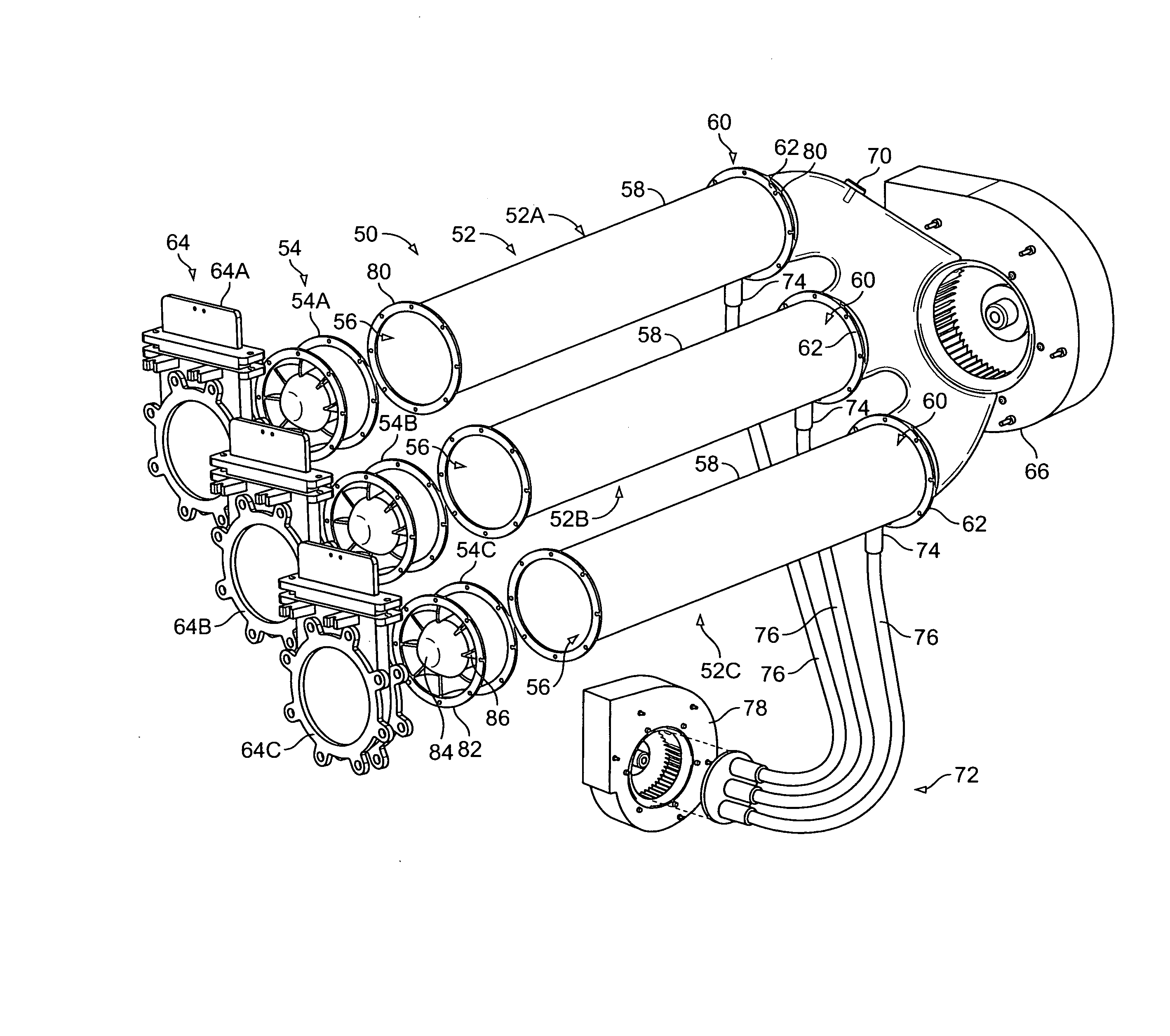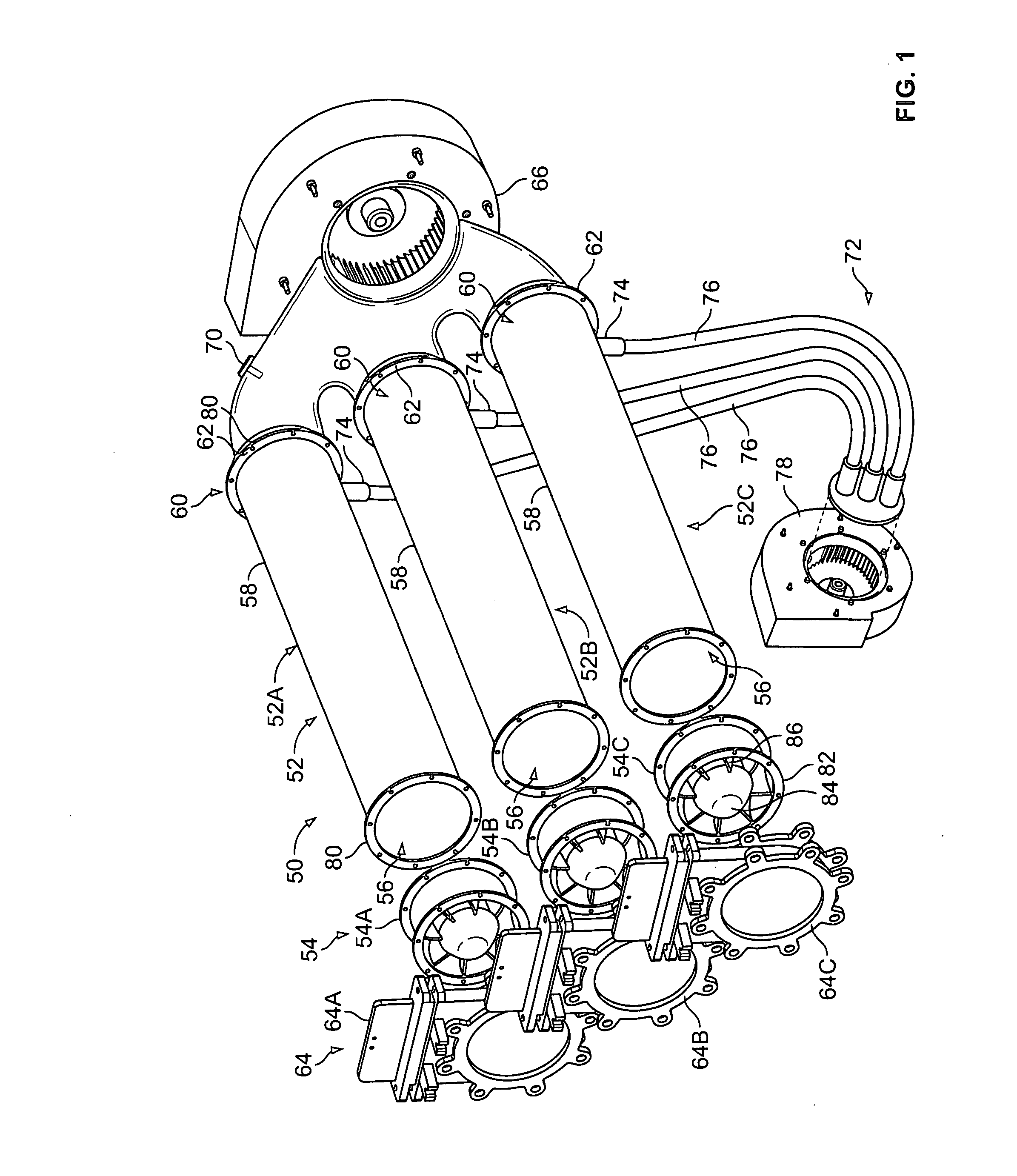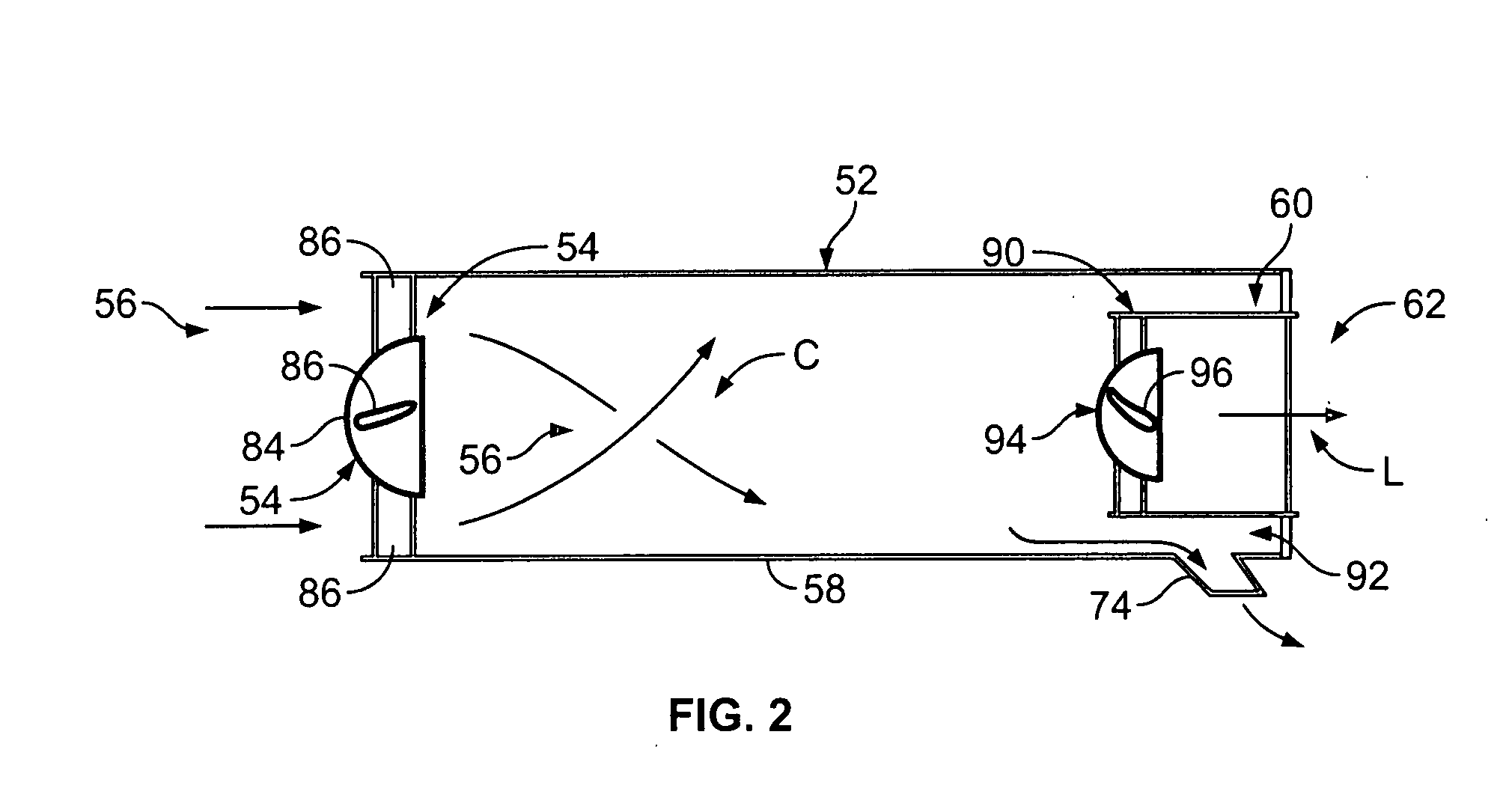Dust separation system for use with mobile equipment
a technology for dust separation and mobile equipment, which is applied in the direction of auxillary pretreatment, cleaning filter means, separation processes, etc., can solve the problems of modest improvement in filter life, inability to fully capture dust and debris, and inability to exhaust fine particulate matter due to incomplete capture, etc., to achieve high flow rate, increase both flow resistance and collection efficiency, and improve the effect of collecting efficiency
- Summary
- Abstract
- Description
- Claims
- Application Information
AI Technical Summary
Benefits of technology
Problems solved by technology
Method used
Image
Examples
Embodiment Construction
[0019] Embodiments of the invention described herein may be used with commercially available cleaning or sweeping vehicles, for example, wherein dust removal from an air flow is desired. It will be understood that any suitable vehicle, which performs cleaning, sweeping, vacuuming or acquisition of particulate matter, fluids and the like, will benefit from embodiments of the present invention. Different sized and shaped dust separation systems may be employed dependent upon the functional parameters of the device to which the system will be attached, as well as the provision of ductwork or passages to couple the dust removal system to the other structural and functional aspects of the vehicle. Furthermore, it will be understood that the operating parameters discussed herein are exemplary in nature and not to be construed as limiting. Air flow thresholds, in particular, will be dependent upon the size and shape and number of axial cyclones used in the array, the vacuum-generating devi...
PUM
| Property | Measurement | Unit |
|---|---|---|
| length | aaaaa | aaaaa |
| pressure | aaaaa | aaaaa |
| weight | aaaaa | aaaaa |
Abstract
Description
Claims
Application Information
 Login to View More
Login to View More - R&D
- Intellectual Property
- Life Sciences
- Materials
- Tech Scout
- Unparalleled Data Quality
- Higher Quality Content
- 60% Fewer Hallucinations
Browse by: Latest US Patents, China's latest patents, Technical Efficacy Thesaurus, Application Domain, Technology Topic, Popular Technical Reports.
© 2025 PatSnap. All rights reserved.Legal|Privacy policy|Modern Slavery Act Transparency Statement|Sitemap|About US| Contact US: help@patsnap.com



